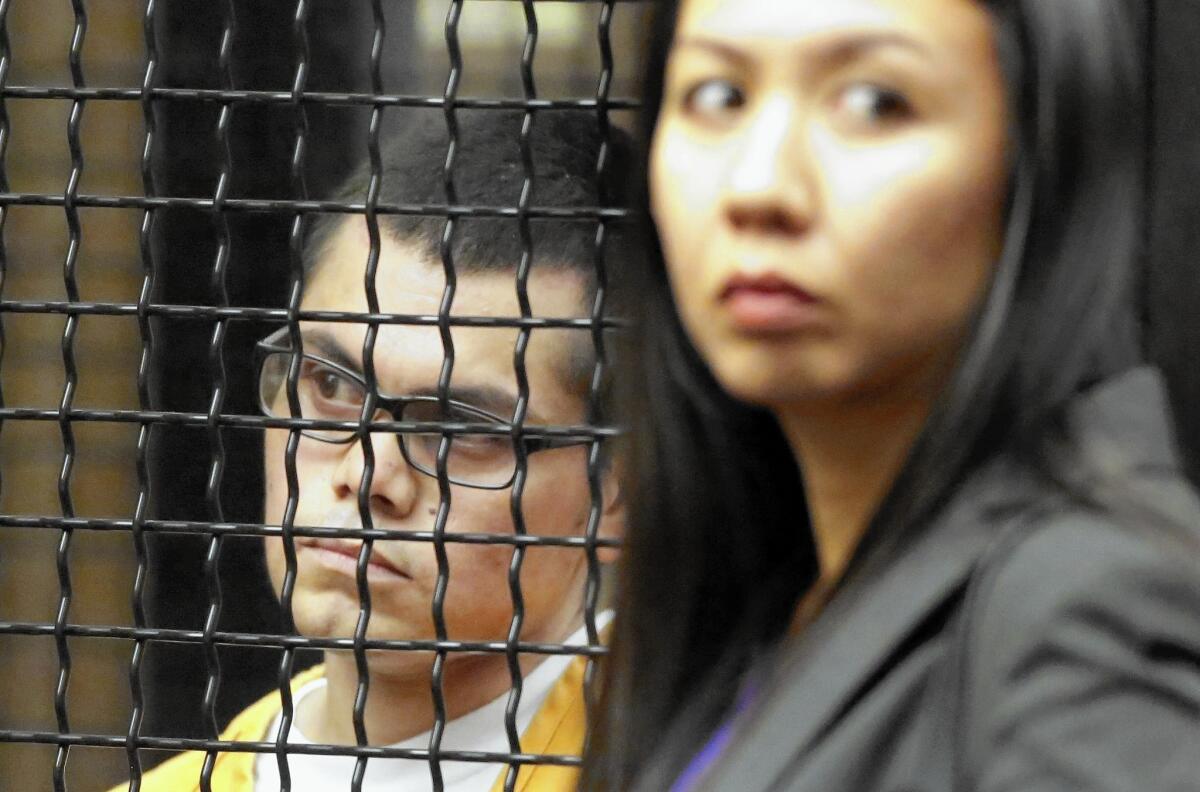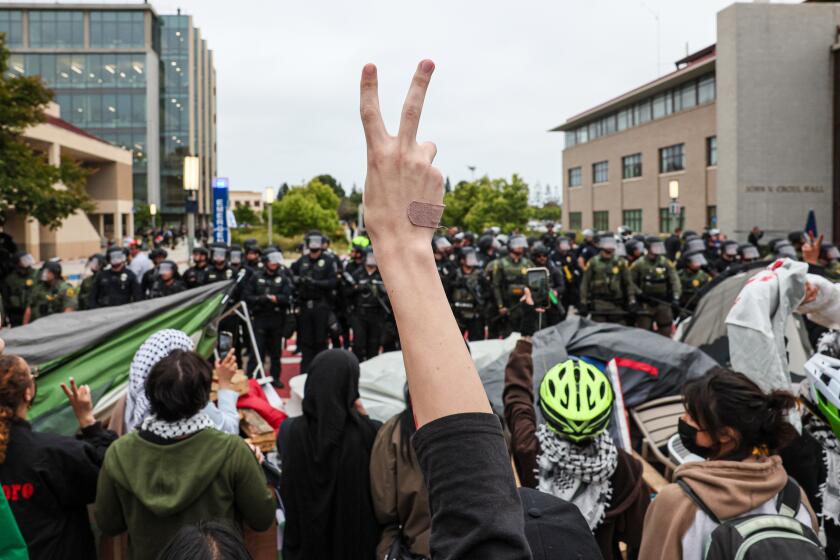Tracking led to confession in deaths of 4 prostitutes, officials say

Old-fashioned detective work and high-tech data gathering led investigators to track down the two men now charged with killing at least four female prostitutes who were swept off the streets of Orange County, according to grand jury testimony.
The body of the final victim was found on a conveyor belt at a trash sorting facility. Items found with the body pointed Anaheim police to an industrial garbage bin where they believed the woman had been dumped, the testimony revealed.
From there, police used the GPS tracking devices of registered sex offenders and the cellphone records of the missing women to help identify two career criminals as the possible killers.
The phone records of the men themselves — mostly rapid-fire text messages — offer a gruesome play by play leading up to the final victim’s death last March, a phone records analyst told the grand jury.
“Bye-Bye, kitty,” one of the suspects texts the other the night it’s believed the woman was killed, according to testimony.
Franc Cano, 28, and Steven Dean Gordon, 45, are now charged with raping and murdering four women and could face the death penalty if convicted.
Hundreds of pages of grand jury testimony made public Monday outline the case that detectives built against the pair of convicted child molesters who police say prowled the streets of Santa Ana and Anaheim looking for women. The men are set to appear in court Jan. 16 for a pretrial hearing.
The crimes date back to the fall of 2013, when Kianna Jackson, 20, vanished shortly after speaking to her mother while taking a bus to Santa Ana to keep a court date.
Twenty days later, Josephine Monique Vargas, a 34-year-old mother of three, left a relative’s birthday party to walk to a market and never returned.
And 20 days after that, Martha Anaya, 27, asked her boyfriend to pick up their child from school so that she could work — which, when she was desperate for cash, sometimes meant looking for customers along East 1st Street, relative said.
Though Santa Ana police investigated the cases, the women were never found, their disappearances never explained.
It was the discovery of Jarrae Estepp’s battered body at the Anaheim trash facility, identified by a tattoo of her mother’s name on her bruised neck, that caused detectives to conclude the cases were related, and most likely the work of a serial killer.
“The whole thing unravels and becomes the case that we have here today,” Deputy Dist. Atty. Larry Yellin told jurors.
Scanning the GPS monitoring devices for all registered sex offenders in the area, detectives testified that they found only one person who was near the Beach Boulevard location when Estepp used her cellphone for the last time and at the trash bin when it’s believed her body was dumped: That was Franc Cano.
His GPS data also matched the place and date of disappearance for the other three women, according to the grand jury testimony.
Police set up around-the-clock surveillance on Cano, according to testimony, and lured him to the police by saying he needed to do his monthly check-in, required of registered homeless sex offenders. On his way, undercover officers said they saw Cano toss out a piece of chewing gum that they quickly gathered up as possible DNA evidence. During the meeting, they also took a mouth swab. Prosecutors said there was a match with DNA found on Estepp’s body.
After identifying Steven Dean Gordon as a possible second suspect, he was taken into custody and confessed during a 13-hour interview, according to testimony.
Det. Julissa Trapp said that during the interview, Gordon picked all four women out of a photo lineup and carefully put them in the order they disappeared. Trapp testified that he knew roughly when each had been killed and pointed out to her that a fifth victim appeared to be missing from the lineup. That person has never been identified.
At first, Gordon left Cano’s involvement out of his account, Trapp said. But she said he later revised his story and described Cano as an active, aggressive participant in the killings.
Recounting his exchange with the first woman, Kianna Jackson, Gordon allegedly confessed that he picked her up on Harbor Boulevard with Cano hiding in the back seat and took her to an industrial area the two were known to frequent. Gordon said he decided to strangle her when he realized that her street name “Kayla” was the same as his daughter’s, Trapp testified.
Trapp testified that Gordon told her that hearing the name “triggered him.”
One by one, he continued through his account of each of the killings, according to the testimony. Vargas “was kind of crazy” and pulled on the car’s steering wheel, he told Trapp. Anaya was “the one that put up the most fight.”
After the men allegedly picked up Estepp in Anaheim and drove her to the industrial area, testimony showed the men exchanged a long series of text messages that seemed to show they were hesitant and tentative with what to do with the 21-year-old:
“I can’t hurt this cat. I just can’t,” Gordon texts Cano at 10:28 p.m. on March 14 of this year.
“Then get rid of her,” Cano texts Gordon at 11:55 p.m.
“How?” Gordon asks.
“Happy Hand,” Cano replied, a phrase prosecutors interpreted to mean strangling.
“Bye-bye, Kitty,” Gordon texts Cano at 12:13 a.m.
Trapp said that at one point Gordon asked Estepp to stay with him, to quit the life of working the streets, but she refused.
“That’s when Cano grabbed her, and she pulled out mace and maced Gordon first and then maced Cano, and that’s when they proceeded to assault her, assault her as Gordon is punching her, as Cano is strangling her,” Trapp told jurors.
They pulled her from the car, undressed her and Gordon leaned down to kiss her and tell her he was sorry, the detective said Gordon told her.
“And then,” Trapp concludes, “they discarded her in the trash can.”
More to Read
Sign up for Essential California
The most important California stories and recommendations in your inbox every morning.
You may occasionally receive promotional content from the Los Angeles Times.









